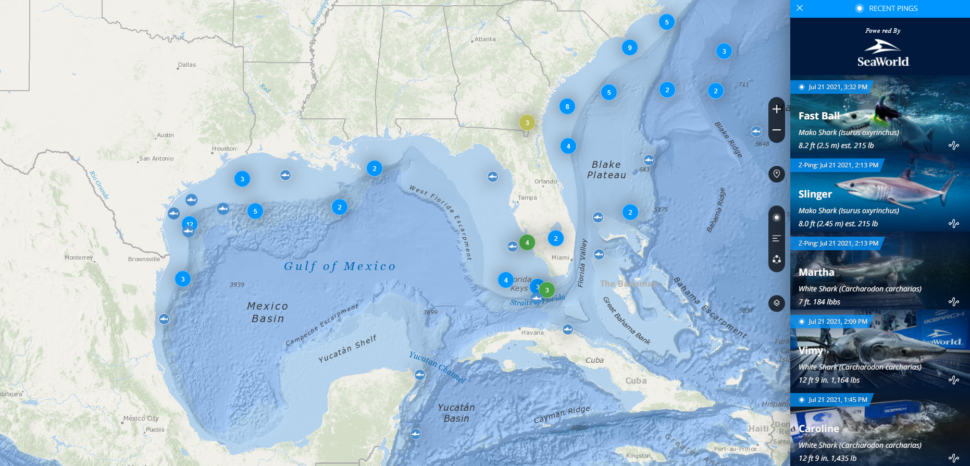One of the most unexplored places on Earth is the ocean’s deepest points. We know more about the moon’s surface than what may be down there. A few people have gone deep, and what they have discovered is incredible.
Headed to the beach? This tracker shows you where sharks are lurking
The last thing that you want when swimming in the ocean is something unidentified brushing up against you. For most people, the immediate thought would go to a shark. Encounters are somewhat rare, but it’s terrifying, nonetheless.
In the last decade, there were 799 unprovoked shark attacks, of which less than 7% were fatal. In the U.S., there were only 33 unprovoked attacks last year, of which three were fatal. Your chances of an attack are one in 11.5 million, with a fatal attack being one in 264 million.
But that doesn’t make going to the beach or swimming in the ocean less scary. Humans, by nature, are wary of what we can’t see, and sharks are masters of ambushing. Luckily you don’t have to guess where you’ll have the best odds this summer. There’s a tracker that can help.
Here’s the backstory
Part awareness system and part research tool, Ocearch developed an online tool that assists with tracking marine life for scientific study and research. Spanning the globe, every tag inserted is displayed on the map.
Through 39 expeditions, the organization has managed to tag 416 creatures. The first version of their shark tracker was launched in 2012 with the vision that everybody should have real-time access to the data.
The collected data has revealed some interesting aspects over the years. Last year the Ocearch team found that a tagged tiger shark had swum 4,000 miles from the coast of Mozambique to Indonesia in the span of two years.
“We had no idea a shark from Mozambique would end up off the coast of Indonesia. Sereia now has the longest confirmed migration for the species on record,” the team explained in a press statement.
How to use the tracker
For any marine animal to show up on the tracking map, they need to be tagged. The team can’t tag all sharks out there, so keep in mind that only a fraction of the oceanic predators is tracked on the map.

You can choose which animals you want to see through the map and filters on the right-hand side. By default, all are displayed, but you can filter to show only sharks, alligators, dolphins, seals or turtles.
Google's new augmented reality tool transports you to the other side of the Earth
Have you ever wondered where you would end up if you dug a hole straight through Earth? Standing in your backyard, shoveling directly down until you reach the other side, where would you be? Tap or click here to see how Google Maps’ new feature takes navigation to the next level (literally).
What’s hiding at the deepest point in the ocean?
🪟 A little fun: Window Swap lets you view the world from another person’s window. I saw a tree swaying in the wind in Warsaw, Poland, and a dreamy ocean view in Honolulu. It’s a lot of fun!
What does a sphygmomanometer measure? Is it … A.) Ocean waves, B.) Humidity, C.) Blood pressure or D.) Bird vocal range?
CES 2020: Smart transportation hits the road

With CES now well underway, there’s been no shortage of stories about the technological wonders inside. From robots to smart toilets, you don’t have to look far to find a memorable or unique gadget on display.
And true to its reputation, CES hasn’t skimped on the weirdness this year. Items like home security drones, virtual people and toilet paper robots are just some of the highlights you can find on the showroom floor. Tap or click here to see our CES robot roundup.
A solar powered SUV
Fisker’s Ocean SUV has a driving range of 1,500 miles and has solar panels on the roof. It might get even more miles in “ideal conditions.” Starting price? Just under $38K.
